
Homebrew Reviews!
Baby Pac-Man
Platform: Atari 7800
Release: 2019
Maker: Robert DeCrescenzo

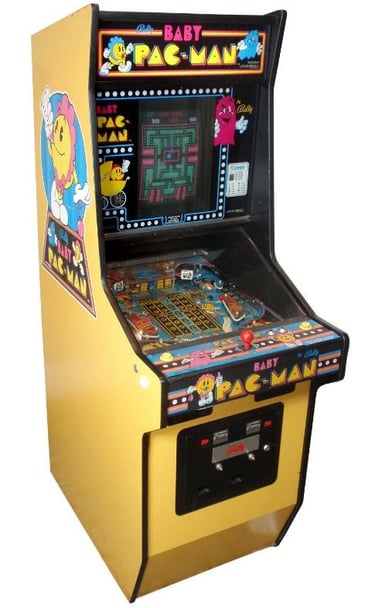
The original machine in all its full, piece-meal glory.
Pac-Man, that iconic globe with an appetite for everything round or ghostly, has starred in a wide variety of games. Most of these titles have been ported—or at least officially emulated—across a spectrum of game systems and consoles, but a few remain elusive. Jr. Pac-Man, Professor Pac-Man, and Baby Pac-Man are especially notorious—crafted not by Namco but by (the now defunct) Bally Midway, these games were never properly approved or licensed, thus rendering them unofficial and invisible to Pac’s current home and owner (Bandai Namco). In short, these three games are non-canonical in terms of Pac-Man lore, and tantamount to pirate software insofar the company is concerned.
Which is a shame, considering at least two of these titles are notable efforts. While Professor Pac-Man is simply a trivia game, of, well, trivial importance, both Jr. Pac-Man and Baby Pac-Man hew to the classic maze-chasing, dot gobbling template of which most are familiar. But due to their dubious legitimacy, home ports are either scarce or non-existent, making arcade emulation the only practical route to experience the game in its rightful form. Well, at least for Junior.
Baby Pac-Man is even more unfortunate; as a pinball/video game hybrid that requires not just a monitor, but a full working mechanical table, porting the game has remained an unrealistic endeavor (though emulation is possible through MAME+VPX). Until now, that is! Thanks to homebrew guru Robert DeCrescenzo, the game has finally been refashioned for a home machine—perhaps appropriately, the Atari 7800. Now fans and curiosity-seekers alike can experience the game without having to find one of the rare physical examples still lingering in some ancient arcade. Just seek Atari Age to buy an actual working physical copy, or simply track down the (newly concocted!) ROM.
But is the game good? That’s…a complicated question. Baby Pac-Man itself is more historical footnote than beloved classic, a title having neither the supreme craft of the original Pac-Man, nor the engineering genius as realized in the best boards of pinball. It was a middling video game attached atop a mechanically mediocre table of lights and bumpers. Mediocre + mediocre = more mediocre.
And yet, sometimes the whole can transcend its lesser ingredients, still providing a worthwhile experience. The game isn’t a particularly good take on traditional Pac-Man, what with its poor graphics and relentless, single-minded ghosts; the game isn’t a great take on pinball, either, thanks to a bland, truncated table with few points of note. But when taken as a singular enterprise, the game becomes an intriguing merger of two well-established formulas.
The gameplay, in brief, begins with the maze game. Players take command of Baby and guide him (her?) through a squarish maze of flat, garish hallways, aiming to snarf all the dots. The ghosts are ravenous and will converge on the hero quickly and, initially, the only realistic option is to go down. By literally scooting Baby off-screen by means of a downward corridor, players gain access to the pinball portion. Here, Baby is now the ball, a metallic sphere players use to whack targets and, hopefully, achieve the primary objective: earning power pellets (energizers) for the video game half. These golden spheres grant Baby a few seconds of table-turning invincibility and are absolutely vital to survival, but more often than not, the beginning player will lose his ball before winning even one. This banishes Baby back to the maze essentially defenseless, with the pinball plane now temporarily sealed.
It’s a tough game, but DeCrescenzo nicely (and wisely) softens the challenge by offering several new options, from difficulty toggles to maze or pinball-only modes. In one sense, this new version is the definitive way to play, especially for those who prefer one side over the other.
Baby Pac-Man was never going to be a classic; a low production run, with many of the machines now lost or junked, all but ensured its footnote status. It’s a sad fact that makes this homebrew not just an important port, but an essential one. A port crafted with the same acumen and attention of a commercial product—making it, for better or worse, the game’s preeminent edition.--D
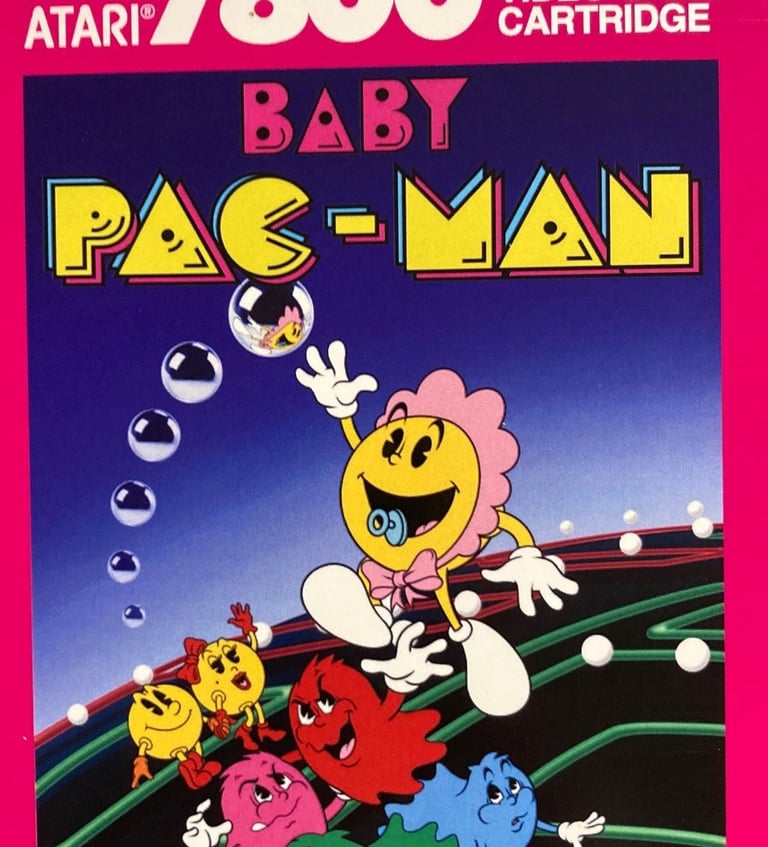

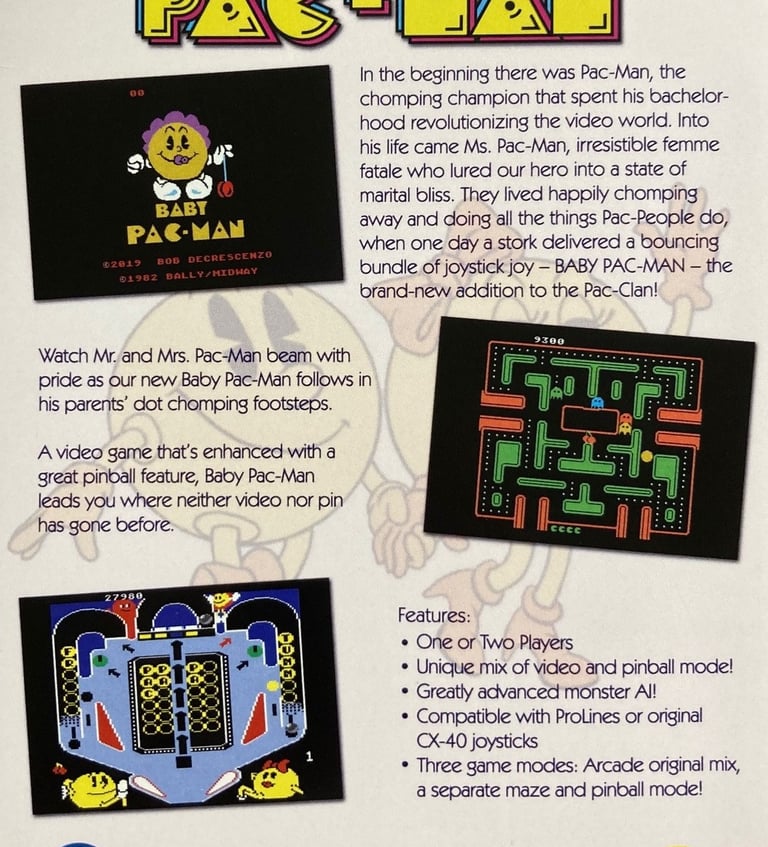

The physical edition comes in a nice box and manual. The latter is shown here, front and back.
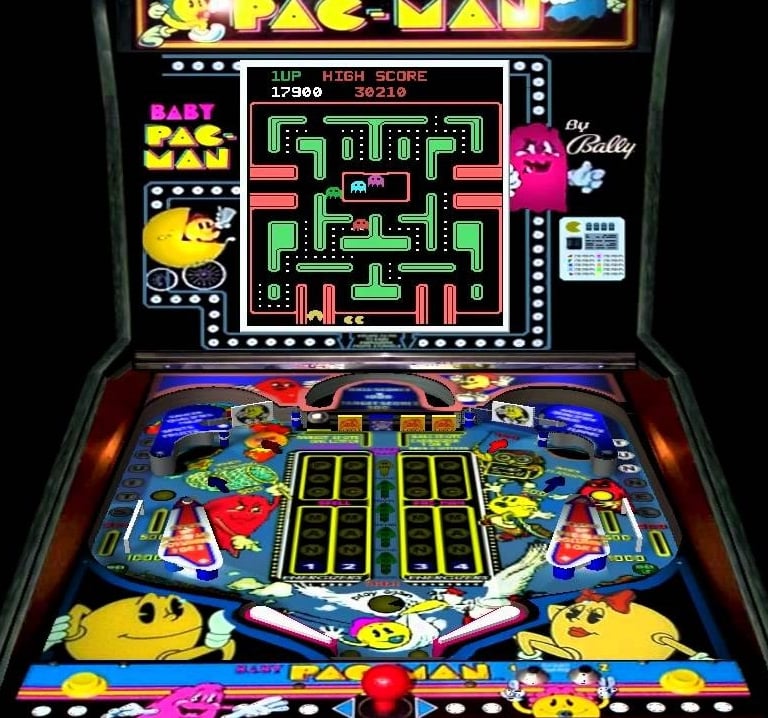



The original arcade machine (via MAME) with the new video version.
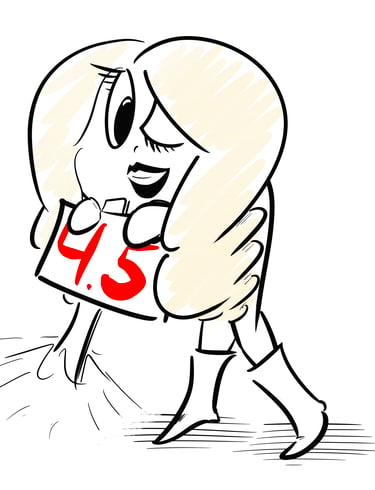

Thanks to Indie Retro News, Old Classic Retro Gaming, and pacman.fandom.com for the machine and gameplay pics.
Princess Rescue
Platform: Atari 2600
Release: 2013
Maker: Chris Spry

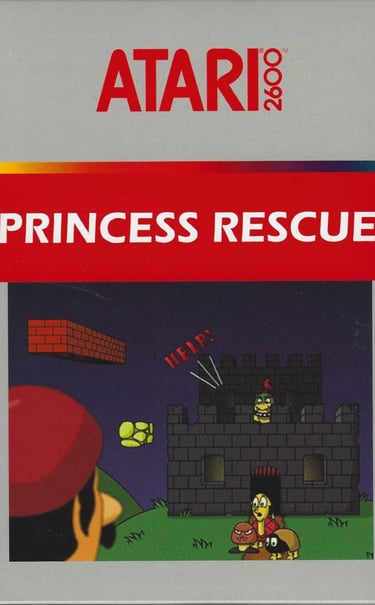
Homebrew enthusiasts like a challenge, often striving to recreate famous games on woefully unpowered or unlikely platforms. Robert DeCrescenzo, for instance, recreated Baby Pac-Man for the Atari 7800, a video/pinball machine hybrid nearly lost to arcade history. Similarly, more than one homebrew programmer has improved on the infamously poor Atari 2600 version of Pac-Man, proving that a reasonably arcade-accurate port is possible. But putting Pac aside, what if someone attempted an Atari 2600 conversion of, say, Super Mario Bros.? It’d be no easy task for even the most talented of coders.
Fortunately, Chris Spry (aka Sprybug) was up for the challenge, dedicating his time to what became Princess Rescue, a captivating “demake” that exceeds all preconceptions of what the humble 2600 can achieve. Detailed sprites! Scrolling horizontal graphics! Varied levels of different terrain and enemy types! Secrets, powerups, and boss fights! It’s an epic experience than makes Pitfall! seem super pitiful.
Like the NES classic, players must guide (a faux) Mario across a wide swath of dangers to save the eponymous princess at the end. This involves a lot of jumping—over pits and perils and atop stubby foes almost always marching to the left. By punching blocks floating overhead, the hero can grab powerups to grow in size and even hurl bouncing fireballs. Indeed, it follows the original template rather closely.
It’s far from a 1:1 conversion, however. The sixteen stages are more remixes than recreations, with many being outright new. This is especially true of the four castle levels where falling Thwomps—not spinning spindles of fire—are the chief concern. The four boss confrontations are also radically different, featuring a “Bowser” who actively bounds around the screen much as Boom Boom did in Super Mario Bros. 3. By standards of the hardware, it’s all incredibly impressive.
And yet, Mario fans and curiosity seekers alike should keep expectations in check; this is a miracle still riddled with caveats and compromises. Bricks, pipes, and blocks are all reduced to stretches of drab rectangles and wafer-thin artifacts, Spinies fall from nowhere without their Lakitu deliverer, the water levels have been excised completely, and the backgrounds are all perpetually black—“blackgrounds,” in essence, that remove the NES game’s warmer tones. Moreover, enemies respawn constantly, hit detection is inconsistent, the time limit is woefully short, and the inputs lack that precise “Mario” feel (although this can be partly blamed on the console’s one-button controls). In short, the game is excellent by Atari 2600 standards, but no one will be mistaking it for Nintendo’s official classic.
Nevertheless, the ingenuity on display here is profound, making for a true standout (even a decade later) in the very crowded homebrew scene. The only shame, naturally, is Nintendo itself, which quickly put the kibosh on the game’s sales back during its initial release. Since gameplay can’t be copyrighted, one assumes the dispute related to a trademark issue with the title’s use of Mario’s likeness and/or the unapologetically reproduced Koji Kondo tunes. Regardless, Spry’s next work, a Sonic the Hedgehog homage (Zippy the Porcupine) that borrowed similar traits, got no such grief from Sega.
For those wanting to try this still-birth release, the only alternative, then, is emulation, with archive.org being a safe place to snag a copy. And considering Princess Rescue’s sometimes daunting difficulty, having instant access to save states might actually make this route the best way to play. It’s just a shame that Nintendo’s interference cost Spry some much deserved acclaim.
Homebrews rarely match this level of ambition, and it’s difficult to imagine a “professional” port from years past achieving half of what Mr. Spry managed here. Hindered by a sharp difficulty and some sloppy level design, the game isn't flawless, but it is, perhaps, the perfect “what if.” A tribute to a bygone era of blocky graphics and 1-channel sound; a proof of possibility that stands defiant to what Fate ultimately decided.
Homebrew or knockoff, copy or not, Princess Rescue is a classic in its own right. Mr. Spry deserves a heap of thanks.--D
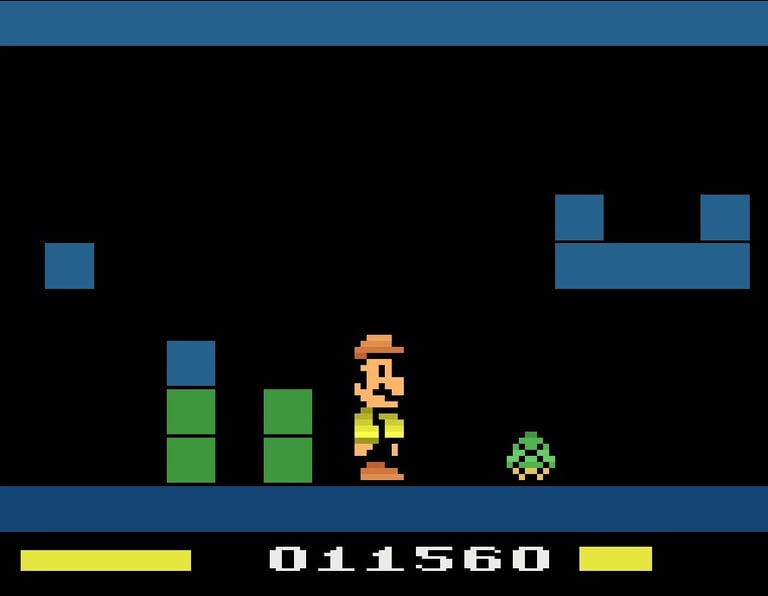

Early levels mimic the NES originals...vaguely. And yep, the Koopas are still kickable.
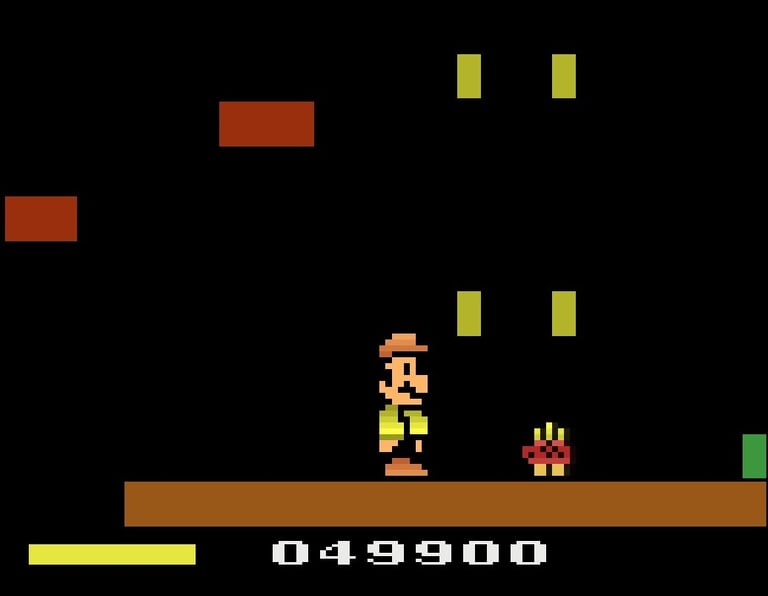

The falling Spinies are back, but Lakitu remains forever off-screen.
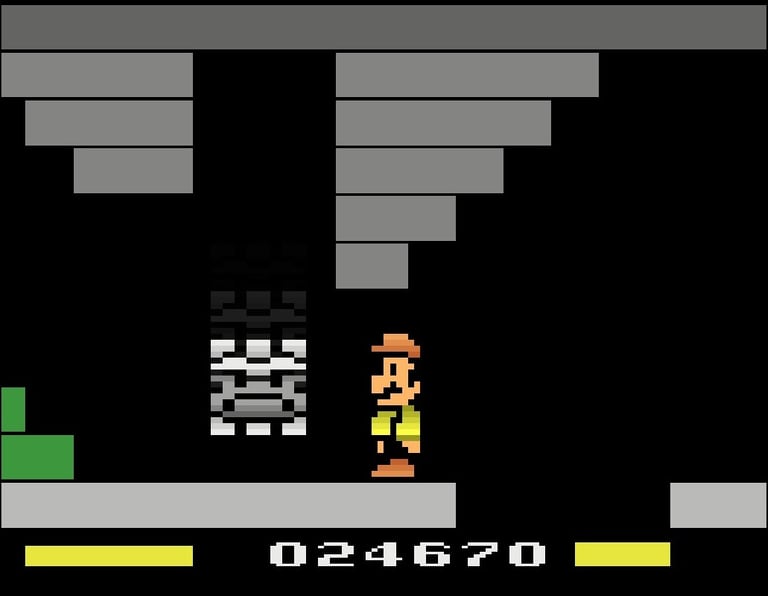

Mr. Spry makes a few modern touches, as seen with the falling Thwomps in the dungeon stages. No fire ropes, though.


Spry's take on the Princess, frankly, is far superior than what greeted players at the NES game's conclusion.
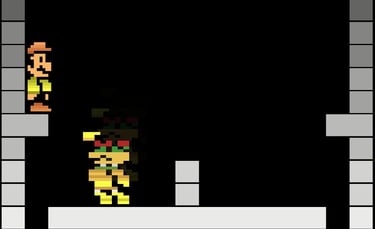

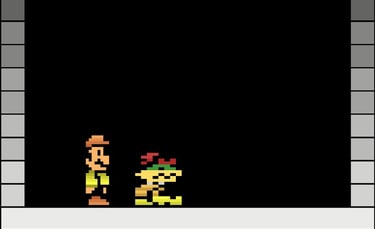

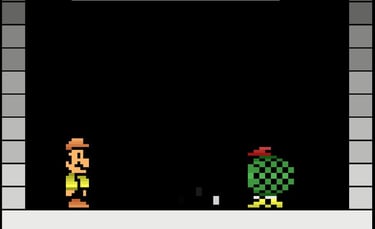

The bouts with "Bowser" are surprisingly dynamic, with the monster both leaping around and blocking fireballs with his shell. Three stomps do him in.




